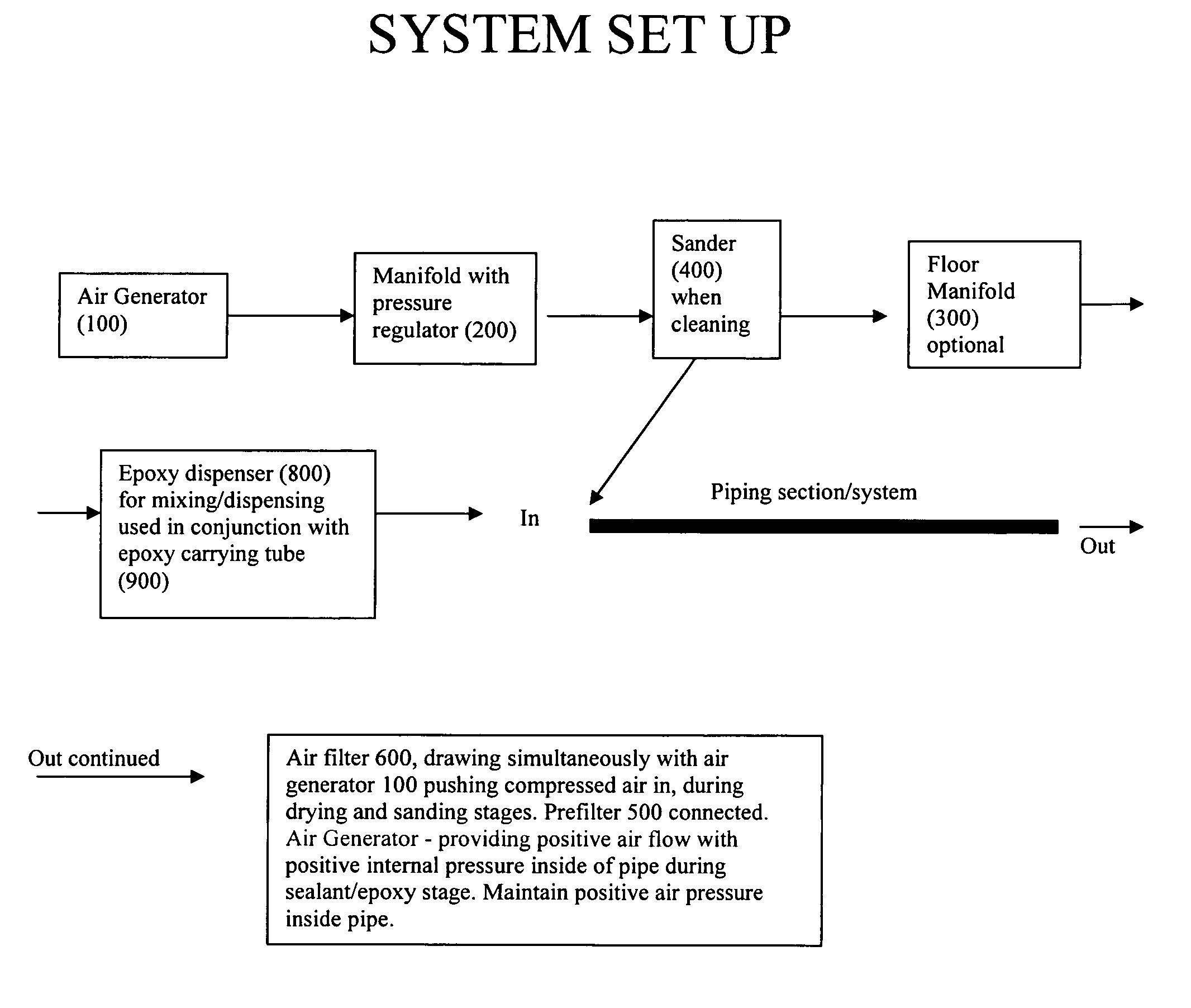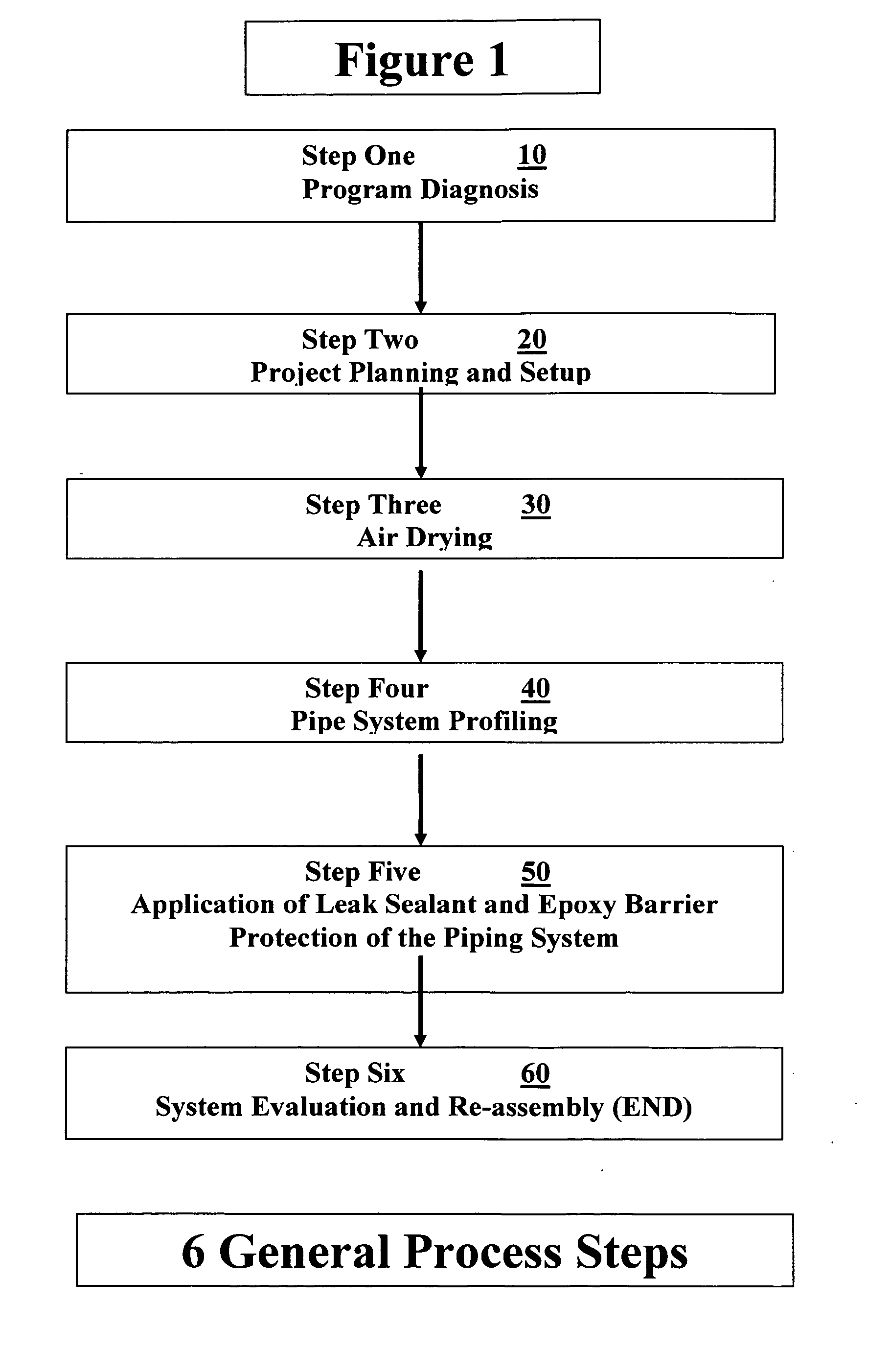Methods and systems for coating and sealing inside piping systems
a technology of sealing and piping system, applied in the direction of manufacturing tools, other chemical processes, hollow article cleaning, etc., can solve the problems of large labor and construction costs that must be incurred for these projects, and the user's common problems with their pipes
- Summary
- Abstract
- Description
- Claims
- Application Information
AI Technical Summary
Benefits of technology
Problems solved by technology
Method used
Image
Examples
Embodiment Construction
[0075] Before explaining the disclosed embodiments of the present invention in detail it is to be understood that the invention is not limited in its application to the details of the particular arrangements shown since the invention is capable of other embodiments. Also, the terminology used herein is for the purpose of description and not of limitation.
[0076] This invention is a Continuation-In-Part of U.S. patent application Ser. No. 11 / 246,825 filed Oct. 7, 2005, which is a Divisional of U.S. patent application Ser. No. 10 / 649,288 filed Aug. 27, 2003, now issued as U.S. pat. No. 7,160,574 on Jan. 9, 2007, which claims the benefit of priority to U.S. Provisional Patent Application 60 / 406,602 filed Aug. 28, 2002, all of which are assigned to the same assignee as the subject invention and all of which are incorporated by reference.
[0077]FIG. 1 shows the general six steps for a project overview for applying the barrier coating leak sealant to an existing piping system, which inclu...
PUM
| Property | Measurement | Unit |
|---|---|---|
| Length | aaaaa | aaaaa |
| Time | aaaaa | aaaaa |
| Diameter | aaaaa | aaaaa |
Abstract
Description
Claims
Application Information
 Login to View More
Login to View More - R&D
- Intellectual Property
- Life Sciences
- Materials
- Tech Scout
- Unparalleled Data Quality
- Higher Quality Content
- 60% Fewer Hallucinations
Browse by: Latest US Patents, China's latest patents, Technical Efficacy Thesaurus, Application Domain, Technology Topic, Popular Technical Reports.
© 2025 PatSnap. All rights reserved.Legal|Privacy policy|Modern Slavery Act Transparency Statement|Sitemap|About US| Contact US: help@patsnap.com



